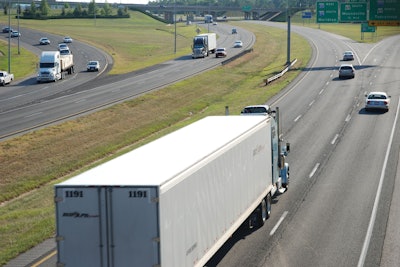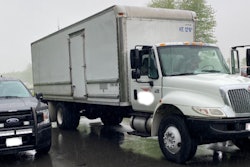 The more you earn, the more savings you’ll see under the new tax bill, experts say.
The more you earn, the more savings you’ll see under the new tax bill, experts say.Most owner-operators will likely save thousands on their annual tax bills under new provisions implemented by the Tax Cuts and Jobs Act reform law enacted in late December.
Though the law removes the individual mandate to have health insurance, owner-operators who haven’t complied still face two more years of tax penalties if they remain uncovered. As for changes affecting per diem deductions, owner-operators effectively will see no loss of tax benefit, but many company drivers will.
Company drivers also will not see the bottom-line tax savings that owner-operators will. Not only does the law cut tax rates, it implements a new 20 percent deduction on net business profits of so-called “pass-through entities.” This includes nearly all owner-operators, said Kevin Rutherford, founder and CEO of trucking tax firm LetsTruck.com, and experts at ATBS, the country’s largest owner-operator services firm.
The new 20 percent deduction, as well as a few other reforms instituted by the tax overhaul, will mean annual savings of $2,000 or more for many owner-operators, says ATBS President and CEO Todd Amen. Rutherford cites a spread of $2,000 to $7,000 a year for most owner-operators.
“I have run the numbers on every possible scenario for an owner-operator,” says Rutherford. “Married, single, married with one kid all the way up to four or five kids. Across the board, everybody made out.”
The pass-through deduction allows owner-operators to lop 20 percent of their businesses’ net income for tax purposes, meaning they’ll only be taxed on 80 percent of their net profit. Pass-through entities include businesses set up as sole proprietorships, limited liability corporations, S corporations and partnerships — encompassing “99.5 percent of owner-operators,” says Rutherford. This change will take effect for the 2018 filing year, not for 2017 filings, which are due April 17.
“Everybody saves,” he says. “The more you make, the more you save. At $100,000 net profit, the net savings in 2018 over 2017 is about $7,000.”
According to an example provided by Rutherford, an owner-operator filing as single and earning $63,500 a year will save nearly $4,000, due to the 20 percent pass-through deduction and the lower rates, which were detailed here by Overdrive in December. Owner-operators married with children will see even greater savings.
Company drivers won’t fare as well under the new law, says Amen. Per his company’s analysis, company drivers will pay an extra $600 a year on average, starting in the 2018 filing year, due in part to the removal of the per diem deduction taken by company drivers.
Owner-operators can still deduct the meal per diem expense as an expense on their Schedule C form. Company drivers, who are not independent contractors, do not file a Schedule C. The per diem deduction for owner-operators works out to $50.40 (80 percent of the $63 allotted) for each day a driver works away from home.
Also sunsetted by the new tax law is the health insurance mandate instituted by the Affordable Care Act, which carries tax penalties of between $695 and $2,000 a year for owner-operators who do not have health insurance. However, that change won’t take effect until the 2019 filing year, taxes for which are due April 2020. ATBS analysis shows that about 40 percent of its owner-operator clients do not have health insurance and have been dinged with the penalty in years prior.
Both Rutherford and Amen recommend owner-operators work with their business services provider this year to determine how to structure their business to best capitalize on the new tax system. Dependent on income levels, it may make sense for owner-operators to switch from an S corporation to a sole proprietorship, or vice versa.
Amen says those earning more than $60,000 will likely benefit more from an S corporation structure, while those earning less could fare better as a sole proprietor.
Per diem changes for company drivers
Though company drivers can no longer deduct the $50.40 (80 percent of $63) per diem from their taxable income, they could still take advantage of the $63 per diem if their carrier offers a pay plan to reimburse them for it.
n such a scenario, says Rutherford and Amen, drivers earning 40 cents a mile, for example, could choose to take a base salary of 30 cents a mile and then have the remaining 10 cents be paid as a per diem rate. Those 10 cents per mile would not be subjected to income tax, social security or other payroll taxes.
–Max Heine contributed to this report.











